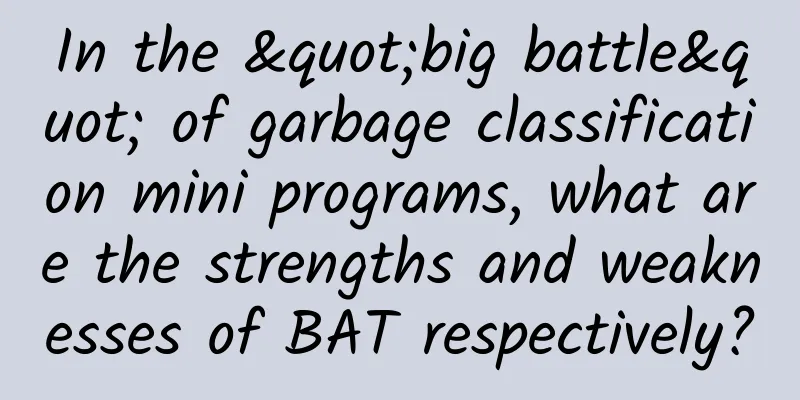How do you deal with “traveling poop”? | Science Museum

|
Have tried Going to the toilet at 120 kilometers per hour? What about 300 kilometers per hour? What about 900 kilometers per hour? You may have tried, They are the green train, high-speed rail and airplane. From this city to that city, The time on the journey always accompanies us for a long time. In fact, different means of transportation not only have different speeds, It brings a different feeling to the journey. The toilet experience in particular impressed the passengers. Have you ever thought about this question: How do different modes of transportation deal with toilet waste? Next, let’s find out. Green train: poop flies along the rails Traditional train Traditional train toilets where you can sometimes see the tracks through the toilet hole Traditional old-fashioned trains, such as some K-type express trains, all use direct-discharge toilets. Due to cost and technical limitations in the past, trains do not collect sewage. When passengers go to the toilet on a train, the toilet also "flows out" at the same time. Excrement sprayed down The feces, urine and sewage on the train are discharged directly onto the rails. However, due to the high speed of the train, all kinds of excrement (including toilet paper, etc.) will be crushed and decomposed by the rapid airflow during the discharge process, and will not accumulate on the rails. Even if there is some residual waste that has not been decomposed, the railway staff along the line will clean it up manually. Thumbs up for their hard work!! Because the excrement is discharged directly onto the rails, when the train arrives at a station or enters a city and the speed is reduced, the toilet will be locked by the conductor and people are prohibited from using the toilet. I believe you can all guess the reason... Prohibited signs on traditional trains This simple and crude design is easy to maintain and low-cost, and once became the mainstream design of train toilets. However, with the development of science and technology, people gradually realized that such treatment methods would not only cause environmental pollution and spread diseases, but also corrode the rails and shorten the service life of the railway. Therefore, the direct-flush toilet design was gradually eliminated. The new ordinary trains no longer discharge excrement onto both sides of the railway. Instead, they use excrement collection toilets. The toilets and excrement collection boxes are directly connected. The vacuum barrier between the two can ensure that the excrement falls accurately and directly into the excrement collection boxes. When the train arrives at its destination, a excrement collection vehicle will handle the excrement collection boxes. High-speed rail: fully vacuum toilets High-speed rail toilet configuration In today's high-speed railway era, toilets are no longer dirty and messy, the environment and service have improved dramatically, and the toilet's feces collection method has become more advanced, realizing a more powerful and hygienic vacuum feces collection toilet design. Schematic diagram of vacuum pumping, the number "60" is the sewage collector This design uses a small amount of water + pressure difference airflow to extract the excrement, and adds a delayed flushing function. The extracted waste is stored in the sewage tank in each carriage, and the sewage unloading workers will centrally suck out the sewage after the train arrives at the station. Railway staff connect the sewage suction pipe and sewage tank The vehicles usually stay for a short time after arriving at the station, and the sewage suction work is always very urgent. In addition, the sewage outlet is often blocked by foreign objects, which makes the sewage suction work unable to be completed smoothly. Please do not throw sanitary napkins, beverage bottle caps or other waste into the toilet. When I looked up at the plane: Breathing in fecal molecules? After talking about land transportation, let’s take a look at the “flying vehicles” that travel through the sky every day. Do you remember the news that residents in a certain place often picked up extraterrestrial ice? At that time, the uninformed people thought that this was "meteorite ice" from outer space, but the fact is that these ice cubes were "sky shit" scattered by airplanes. The design concept of toilets in traditional fighter jets and passenger planes is exactly the same as that of direct-flush toilets on trains, with a pipe connecting to the outside for direct discharge. Due to the low temperature and low pressure at high altitudes, the discharged aircraft waste will condense into ice cubes. If the ambient temperature of the falling environment is also low, then residents can indeed catch a glimpse of the true appearance of these objects thrown from ultra-high altitudes. Of course, after a long period of improvement, people no longer need to worry about whether the planes passing over their heads are emitting feces. Modern civil aircraft no longer use these direct-flush toilets. Instead, they use vacuum toilets and centralized treatment methods similar to those used on high-speed trains. At the same time, in order to prevent the smell of sewage from spreading in the enclosed cabin space, the aircraft also carries a sufficient amount of blue deodorant liquid. However, this liquid occasionally leaks, so sometimes you can still see these more beautiful blue falling objects↓↓ Blue ice condensed outside the plane On the plane, when a passenger goes to the toilet, he or she presses a button and a small amount of "clean water" will flow out from the toilet wall. Source: BTV Documentary The polymer material on the inner wall of the toilet plays a similar role to the polytetrafluoroethylene on the surface of a "non-stick pan", ensuring that dirt can be easily flushed away. At the same time, the pressure difference between the vacuum environment generated by the vacuum pump and the atmosphere sucks sewage and dirt into the "feces tank" carried by the aircraft. Source: BTV Documentary After the plane reaches the ground, a professional sewage truck from the ground service department will come to collect and treat sewage and waste. Ground operators connect a thick and long pipe on the sewage truck to the outlet of the aircraft's "feces tank". After turning on the safety switch, the sewage and dirt in the aircraft will flow along the pipe into the sewage truck. Social changes and technological advances have gradually upgraded our toilet experience. Vacuum feces collection technology is both environmentally friendly and hygienic, and it also comprehensively improves passengers' sense of happiness when going to the toilet. Creator: China Science and Technology Museum New Media Team Review: Invited expert from Xin Ziming's new media team |
>>: Why do we feel pain? Who is less afraid of pain, men or women?
Recommend
Mobile high bandwidth server rental
In this era of rapid development of Internet tech...
Do you know about the top 10 most popular fission marketing?
The article breaks down the top ten most popular ...
The third probe has arrived at Mercury. Will it be possible to colonize it in the future?
Mercury is the planet closest to the Sun, with an...
Imitation iPhone password lock effect
Source code introduction An iPhone-like password ...
Douyin Training Camp Project Practice (Operation)
As the pressure of employment competition becomes...
The 10nm Qualcomm Snapdragon 835 is here. Are 821/820 phones still worth buying?
Winter is here, spring is not far away, and the ne...
Orange warning! It’s not too late for those who use sunscreen to know this →
Compiled by: Gong Zixin Not long ago The painful ...
Making a killing! Parallel importers use huge iPhone 6 pre-order deposits to lend money
The absence of the iPhone 6 from the mainland was...
Apple eats the meat, Android drinks the soup, has the tablet market entered the end game ahead of time?
Not long ago, the well-known market analysis orga...
The average size of the top ten apps in the App Store is four times that of five years ago, and Gmail has grown 19 times
According to the latest report released by market...
How much does it cost to develop a watch applet in Alxa League?
How much does it cost to develop the Alxa League ...
Sweetener, no rotting, light taste? Five questions about Sunshine Rose grapes, all you care about is here →
When a person is famous, there are many controver...
The necessary logic of brand communication plan
Communication is only a subsystem in the brand sy...
2021 Brand Marketing Market Trends!
If Wang Feng were to ask a question: Tell me, wha...
Jingdong Love Story
[[125843]] In recent days, rumors of the breakup ...









